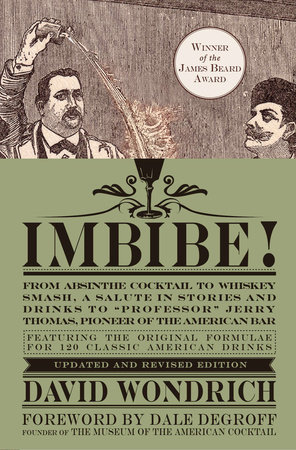ROB ROY COCKTAIL 2 DASHES ORANGE BITTERS ½ JIGGER [1 ½ OZ]
SCOTCH WHISKY ½ JIGGER [1 ½ OZ]
ITALIAN VERMOUTH LEMON PEEL ICE Stir and strain into cocktail glass. SOURCE: JOHN APPLEGREEN,
APPLEGREEN’S BARKEEPER’S GUIDE, 1899.
Notes on Ingredients: Although the early recipes all agree that the Rob Roy contains Scotch and vermouth, after that they’re about as harmonious as a Glasgow pub at last call on a Saturday night. Proportions, brand of bitters, garnish, and kind of vermouth are all very much in play. Personally, I find French vermouth and Scotch to be a nasty combination, so I chose a recipe that agrees with me (it also has the advantage of being the very earliest printed for this drink). If the proportions began at fifty-fifty, as was usual with vermouth drinks, before long they had gravitated to two‑to‑one. With an 80‑proof blend, I prefer the latter; with a 90‑proof one, the former. Of the various bitters suggested, I find orange bitters—and particularly Regans’ Orange Bitters No. 6, with its complex bite—to work the best, although Peychaud’s is also pretty good. And while you’re at it, a twist of orange peel is rather nicer than lemon peel here. Dash of absinthe? As long as you’re asking . . .
Notes on Execution: Stir. Strain. Twist.
CLOVER CLUB COCKTAIL
JUICE ½ LEMON ½ SPOON [1⁄8 OZ]
SUGAR ½ PONY [2 TSP]
RASPBERRY [THAT IS, SYRUP]
¼ PONY [½ OZ]
WHITE OF EGG 1 JIGGER [2 OZ]
GIN Shake well. Strain. SOURCE: ALBERT STEVENS CROCKETT,
OLD WALDORF BAR DAYS, 1931 (CROCKETT WAS THE WALDORF’S PRESS AGENT, AND WHEN PROHIBITION CLOSED ITS BAR, HE RECEIVED CUSTODY OF ITS HANDWRITTEN BAR BOOK).
Notes on Ingredients: Paul E. Lowe, in his 1909
Drinks: How to Mix and Serve, suggests swapping out half the gin for French vermouth; that’s also how Harry MacElhone, who worked at the Plaza in the early 1910s, made his. This is a truly transformative suggestion, turning a serviceable drink into an ambrosial one. MacElhonealso suggests lime juice instead of lemon, which is worth trying; in either case, ½ ounce should do.
Beverages De Luxe, a 1911 drink book that prints a Clover Club recipe its authors picked up from the Hotel Belvedere in Baltimore, agrees about the lime and the vermouth and suggests replacing the raspberry syrup with actual raspberries, if in season. This is a fine suggestion, but if adopted, it will require more sugar: say, half a dozen berries and ¼ ounce of superfine sugar, depending on the tartness of the raspberries. If you lightly whip the egg white—here to add froth and body—with a fork, you can divide it; otherwise, use one white for every two or three drinks. Whichever formula you use, float a leaf of mint on top and you’ve got a Clover Leaf.
Notes on Execution: If you use fresh raspberries, muddle them with the sugar and the citrus and double-strain the drink—that is, use the Hawthorne strainer in the shaker and put a Julep or tea strainer over the glass to catch the raspberry seeds. Like all drinks using eggs, this one will have to be shaken extra hard.
Copyright © 2015 by David Wondrich. All rights reserved. No part of this excerpt may be reproduced or reprinted without permission in writing from the publisher.





